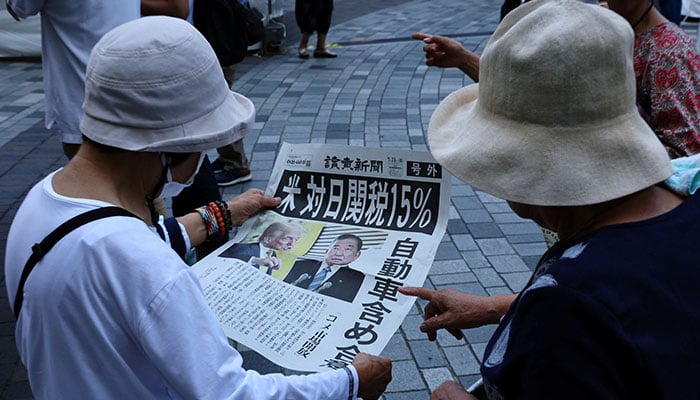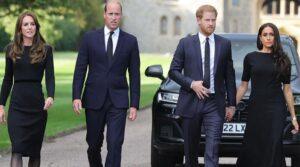
- Japanese goods tariffs reduce 15% of 25%
- Japanese shares jump, and are strengthened against the dollar.
- Tokyo to increase the purchase of American agricultural products.
Washington/Tokyo: United States and Japan reached an agreement to reduce strong tariffs, President Donald Trump threatened to impose assets of his Asian ally that included a US investment package of $ 550 billion and tokyo loans.
The agreement will bring an immediate relief to the critical cars of Japan with existing tariffs cut to 15% of 25%, and proposed taxes on other Japanese goods that arrived on August 1 also reduced by the same amount.
Cars represent more than a quarter of all Japan exports to the United States.
“I just signed the largest commercial agreement with Japan,” Trump said in his real social platform. “This is a very exciting moment for the United States of America, and especially for the fact that we will continue to always have a great relationship with the country in Japan,” he added.
Ishiba, who reported local media, will soon resign after an electoral defeat of Sunday’s elections, praised the agreement as “the lowest figure among countries that have a commercial surplus with the United States.”
The United States investment package includes loans and guarantees of government affiliated institutions of up to $ 550 billion to allow Japanese companies to “build supply chains resistant in key sectors such as pharmaceutical and semiconductor products,” Istiba said.
Japan will also increase the purchases of agricultural products such as American rice, said a Trump administration official. Ishiba said that the proportion of rice imports from the United States can increase under its existing framework, but that the agreement “would not sacrifice Japanese agriculture.”
The announcement turned on a demonstration in Japanese actions, with the Nikkei reference rising 2.6% to the maximum in a year. Automobile manufacturers increased in particular, with Toyota more than 11%, and Honda and Nissan rose more than 8%.
The exuberance extended to the actions of South Korean car manufacturers as well, since the Japan agreement fueled the optimism that South Korea could reach a comparable agreement. The Yen reaffirmed slightly against the dollar, while the futures of the European and American equity index surpassed.
But American cars manufacturers pointed out their unhappiness with the agreement, which raised concerns about a commercial regime that could reduce tariffs on japan cars to 15%, while leaving tariffs on imports from Canada and Mexico to 25%.
“Any agreement that charges a lower tariff for Japanese imports with virtually no US content than the rate imposed on vehicles built by North America with a high content of the United States is a bad business for the US industry and US car workers,” said Matt Blunt, led by the American Automotive Policy Council that represents General Motors Ford and Chrysler Father Stellantis.
‘A better result’
Cars are a large part of trade between the United States and Japan, but almost everything is a form of the United States from Japan, a fact that has long bothered Trump. In 2024, the United States imported more than $ 55 billion in vehicles and automotive parts, while just over $ 2 billion were sold to the Japanese market from the United States.
The bidirectional trade between the two countries totaled almost $ 230 billion in 2024, with Japan with a commercial surplus of almost $ 70 billion. Japan is the fifth largest American commercial partner in goods, as shown by the data of the United States Census Office.
Trump’s announcement followed a meeting with the main tariff negotiator in Japan, Ryosei Akazawa, at the White House on Tuesday.
“#Mission Complete,” Akazawa wrote in X, then saying that the agreement did not include Japanese steel and aluminum exports that are subject to a 25%rate, or any agreement on defense budgets.
The agreement was “a better result” for Japan of what could have been, given the previous unilateral tariff threats of Trump, said Kristina Clifton, the main economist of Commonwealth Bank of Australia in Sydney.
Kazutaka Maeda, economist from the Meiji Yasuda Research Institute, said that “with the 15%tariff rate, I hope the Japanese economy avoids the recession.”
Japan is the largest investor in the United States. Together with the GPIF pension giant and Japanese insurers, the country has approximately $ 2 billion invested in US markets.
In addition to that, the data of the Bank of Japan shows that the Japanese direct investment in the United States was $ 1.2 billion at the end of 2024, and Japanese direct investment flows amounted to $ 137 billion in North America last year.
Later in the White House, Trump also expressed a new optimism that Japan would form a joint company with Washington to support a gas pipe in Alaska sought for a long time by its administration.
“We conclude the only treatment […] And now we are going to conclude another because they are forming a joint business with us in, in Alaska, as they know, for the LNG, “Trump told White House legislators.” Everyone is ready to make that treatment now. “
Trump attendees are working feverishly to close trade agreements before a deadline of August 1 that Trump has repeatedly retreated under pressure from markets and the intense lobbying of the industry. On that date, countries will face new steep rates beyond those Trump has already imposed since he assumed the position in January.
Trump has announced Marco agreements with Great Britain, Vietnam, Indonesia and stopped a battle of rates with China, although the details have not yet been resolved with all those countries.
In the White House, Trump said the negotiators of the European Union would be in Washington on Wednesday.



